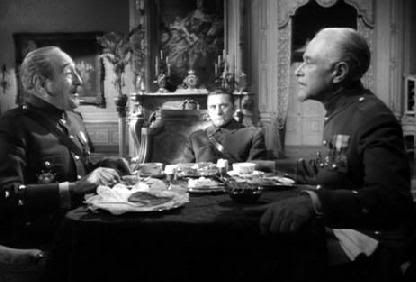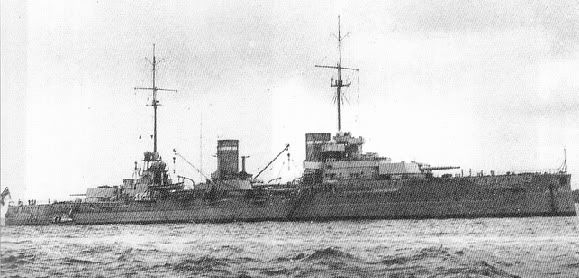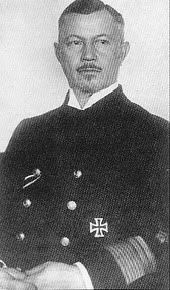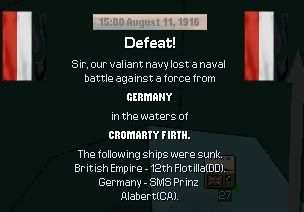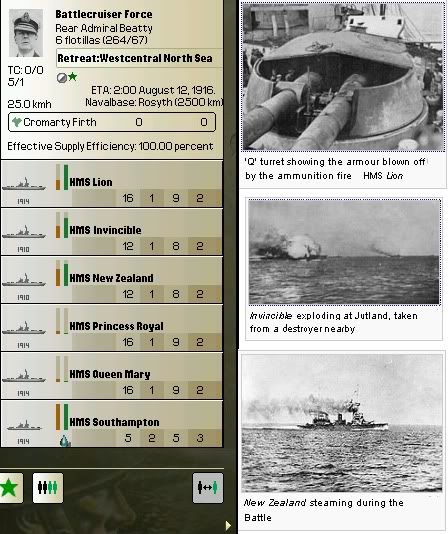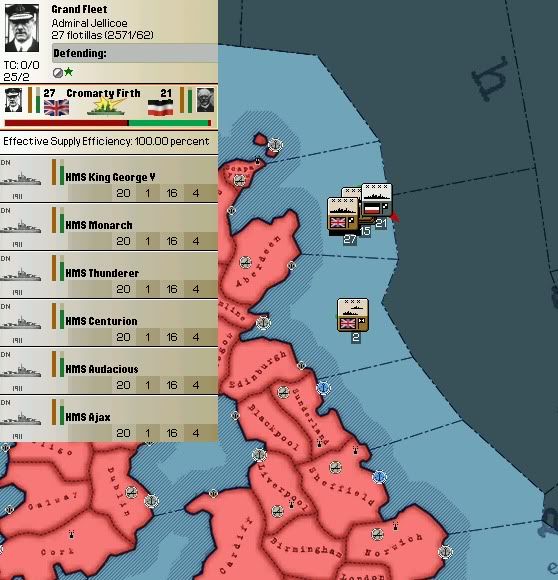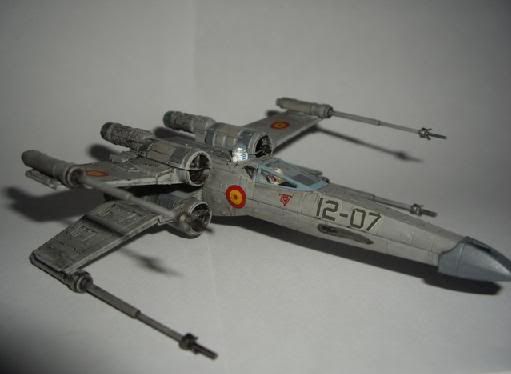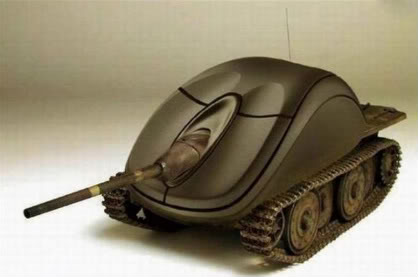Chapter fifty: The Yarmouth Raid
Since the beginning of the Great War, the German High Seas Fleet had raided British waters, trying to British forces into battle in conditions advantageous to the Germans. Since the
Kanalkampf and the
Waddenzee battle which led to the devastating defeat of the German navy, the raids of the Hochseeflotte had been dropped when the submarine warfare began in earnest. Then, in late 1916, with the new submarine campaign and the bombing raids against England working at full steam, a proposal was made to bombard military targets along on the east coast of England along with air raids by zeppelins, which would prompt British units to intervene. A similar raid had been planed to coincide with the expected Easter Rebellion by Irish Nationalists, who had requested German assistance, but in the end it had proved to be impossible.
Finally, it was decided to carry on with the discarted proposal: A German force would bombard military targets along the English coast, and then the bombardment force would attack whatever British force showed first. With a little luck, the German battlecruisers could engage the light forces based on Norwich and after defeating it would run to join there the High Seas Fleet and defeat any force which dared to persue them. If successful, the High Seas Fleet would be able to destroy significant elements of the British fleet before the main body of the Grand Fleet could assist, reducing or eliminating the Royal Navy's numerical superiority. If the British did not take the bait, then merchant ships could be captured and British units off the coast of Belgium destroyed.
The first German battlecruiser set the pattern for the rest. The Von der Tann carried 11 inch (280 mm) guns compared to the 12 inch (305 mm)
guns of the British Invincible class, but her main armour belt was 10 inch
(254 mm) thick compared to 6 inch (150 mm). The first German capital ship
to be powered by turbines, the Von der Tann could make 29 knots.
The plan was to bombard military targets in Lowestoft (Norfolk) and Great Yarmouth (Suffolk). Lowestoft was a base of operations for mine laying and sweeping, while Gt. Yarmouth was a base for the submarines that disrupted German movements in the Heligoland Bight. The destruction of the these military establishments would assist the German war while weakening the closer blockade of the German shores, even if the raid failed to bait the British heavy units. Eight zeppelins would—after dropping their bombs—provide reconnaissance for the battlecruisers, which would in turn provide rescue operations should an airship be lost over the water. The so-called Action Group -consisting of the battlecruisers
SMS Seydlitz, Lützow, Derfflinger, Moltke and
Von der Tann and commanded by Rear-Admiral Bödicker- would be supported by the four light cruisers of the 2nd Scouting Group, and two fast torpedo boat flotillas (VI and IX). The Main Fleet -consisting of Battle Squadrons I, II and III, Scouting Division IV, and the remainder of the torpedo flotillas commanded by Vice-Admiral Reinhard Scheer- was to accompany the battlecruisers until the bombardment was over, in order to protect them against superior enemy forces if necessary.
The raid began when the Action Group left their bases at 18:00 pm, August 10th, 1916, followed by the rest of the German main battleforce. Apparently, the German ships had no problem to avoid the British patrols off Heligoland Bight due to a thick fog which had kept most of the British light forces in their bases. Nevertheless, the British had already been aware that the German fleet had sailed at midday (due to the work of Room 40 decoding the enemy communications.) and, at 20:15 pm, the Grand Fleet had been ordered to sail south from Scapa Flow, and the the Harwich squadron was ordered to move north. However, the reality of naval warfare soon took over the best plans of both sides.
Admiral Reinhard Scheer (1863 – 1928)
True: the zeppelins bombed Norwich, Lincoln, Harwich and Ipswich, as planned, but they saw no enemy ships. Then the bombarment began:
Seydlitz, Blücher and
Moltke proceeded toward Lowestoft, while
Derfflinger, Von der Tann and the light cruiser
Kolberg approached Great Yarmouth. At 08:00,
Derfflinger and
Von der Tann began shelling the town. Panicking, people crowded to the railway station and the roads leading out of the town. Thirty minutes later (08:30am), the
Seydlitz, Blücher and
Moltke opened fire against Great Yarmouth. However, the shelling was to met and untimely end.
At about 08:50 am, August 11th, the light cruiser
SMS Rostock -one of Bödicker's screen ships- sighted British ships in a west-northwest direction. It was Commodore Reginald Tyrwhitt's Harwich command, that was patrolling the British shores. As soon as
Rostock saw the enemy force, she alerted Bödicker and the four battlecruisers turned away north, ceasing the bombardment, while Tyrwithh did the same, attempting to draw the German ships to the Grand Fleet. Bödicker's force followed suit. Their targets had suffered little damages, in spite of the shelling, as they were covered by the fog (1). At 09:10 the four German battlecruisers opened fire upon Tyrwhitt's ships, but they were out of range and no damaged was caused. Then Tyrwhitt received some distressing news.
Germany's lart and most powerful armoured cruiser, Blücher, remained
with Bödicker's battlecruiser squadron despite her much inferior armament.
Apparently, the Grand Fleet had departed to counter the foreseable German raid, but, for some unknown reason, Admiral John Jellicoe's ships were steaming to the Central North Sea and not to the south (2) even if, as soon as the Admiral discovered the mistake, he began to correct it at once. For a while, the Norwich Group was to be supported by the Australian Force detached in Europe (one battleship and four light cruisers under the command of Vice Admiral Patey), and Vice-Admiral Sir David Beatty's Battlecruiser Force (six battlecruisers and 27 destroyers), that were steaming at full speed to meet the Germans. Thus, after several hours of running north and finding no friend forces, Tyrwhitt decided to fight the enemy to win time for Jellicoe. It was a short action, as he broke off the action when he found seriously outgunned after the battlecruisers returned. However, he was lucky. Even if he lost a whole destroyer flotilla -the 12th-. his light ships managed to hit with four torpedos the heavy cruiser
SMS Prinz Albert, which, with a huge bang, vanished under the dark waters of the Nortern Sea.
Meanwhile, Vice Admiral Patey was an unlucky mean, as one of his cruisers, the
HMAS Encounter, was damaged by one of the five German Uboaten deployed to intercept any Allied force comming from Scapa Flow. Facing this underwater threat, Patey turned north, hoping to link with Jellicoe. By this time, the British admiral felt, in some uncanny way, like the Grand Old Duke of York but without a hill. Fumming, he discovered then that Beatty was already on the way and Patey going on the opposite direction. Then, after ordering the fleet to turn south, the bridge of Jellicoe's flagship, the battleship
HMS Iron Duke, was filled with Jellicoe's colorful and expressive tirade which lasted a couple of minutes.
Had he know that the German commander, Vizeadmiral Reinhard Scheer's Hochseeflotte was unknowingly steaming to meet Jellicoe, perhaps the British admiral would have been felt slightly better. By sheer chance, the two main fleets were to meet again.
(1) Who said that bad weather was a British weapon?
(2) Well, don't look at me in that way. Napoleon wasn't so good at sea, either!
@Enewald: And Finland should have conquered Russia by that date, too



@trekaddict: Darn it, Baldrick! I told you to keep secret the plans for the invasion of France!
@quaazi: Of course you are...

@trekaddict -2-: Don't make me think about the tank, don't make me think...
@Nathan Madien: Not everybody can be named Robert Edward or Ulysses Simpson...
@c0d5579: That's when I confess that Kirk Douglas is one of my top favourite actors. Simply awesome.
@Razgriz 2K9 and @TheExecuter: Just read my answer to Viden. About Nivelle... it's just 1916... give him time
@Viden: Why making footnotes, why?!?!?! Anyway, by your loyal service, hereby and therefore and henceorth I shall award thee with the Order of the Petti Pizza, 1st class with Swords, Oaks Leaves and Golden Farts! Congratz, man!
@Zhuge Liang: Soon, my dear boy, soon...
